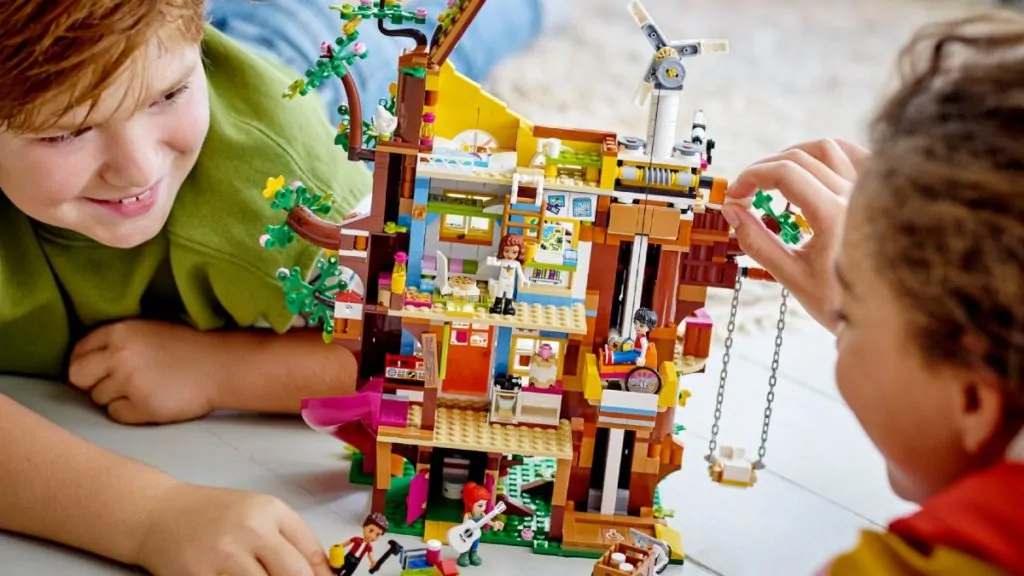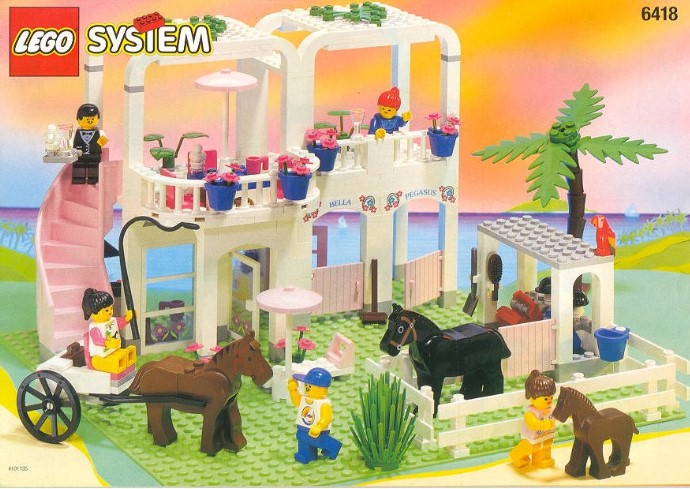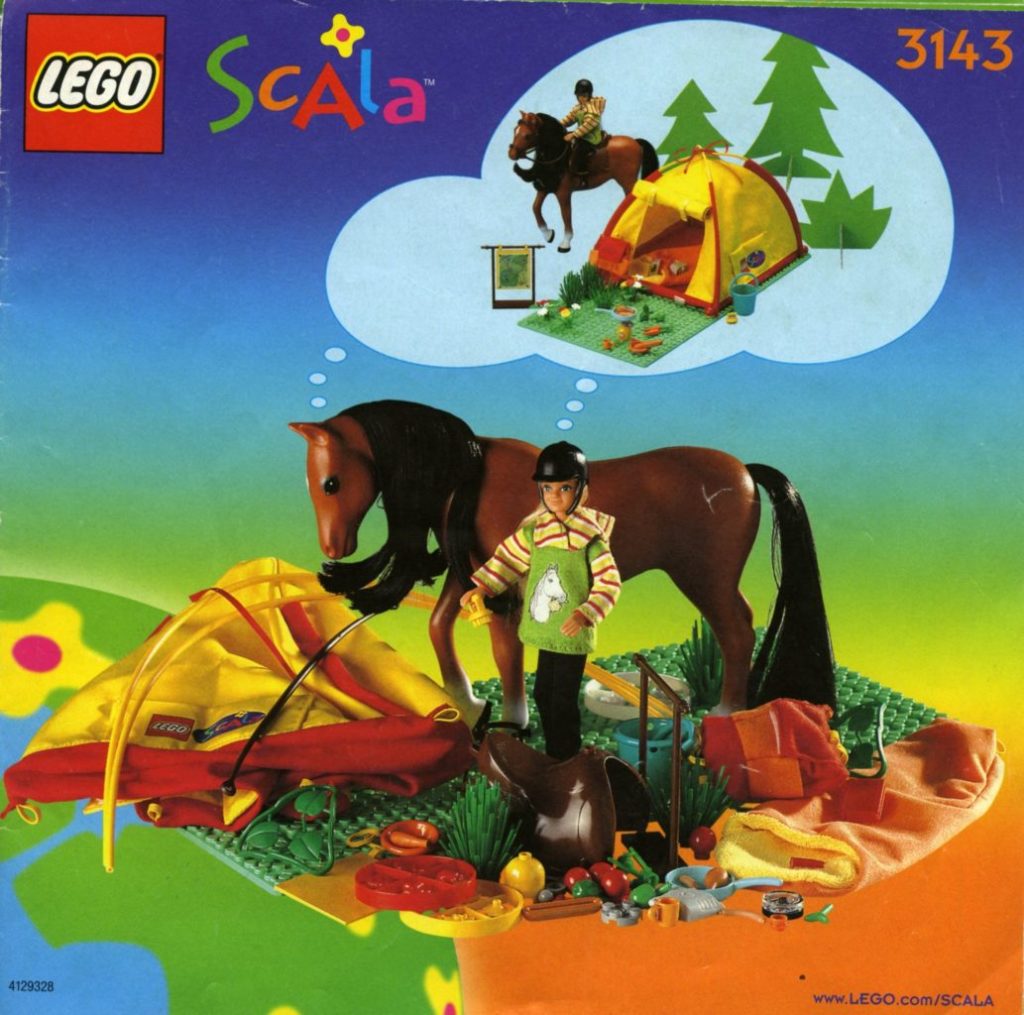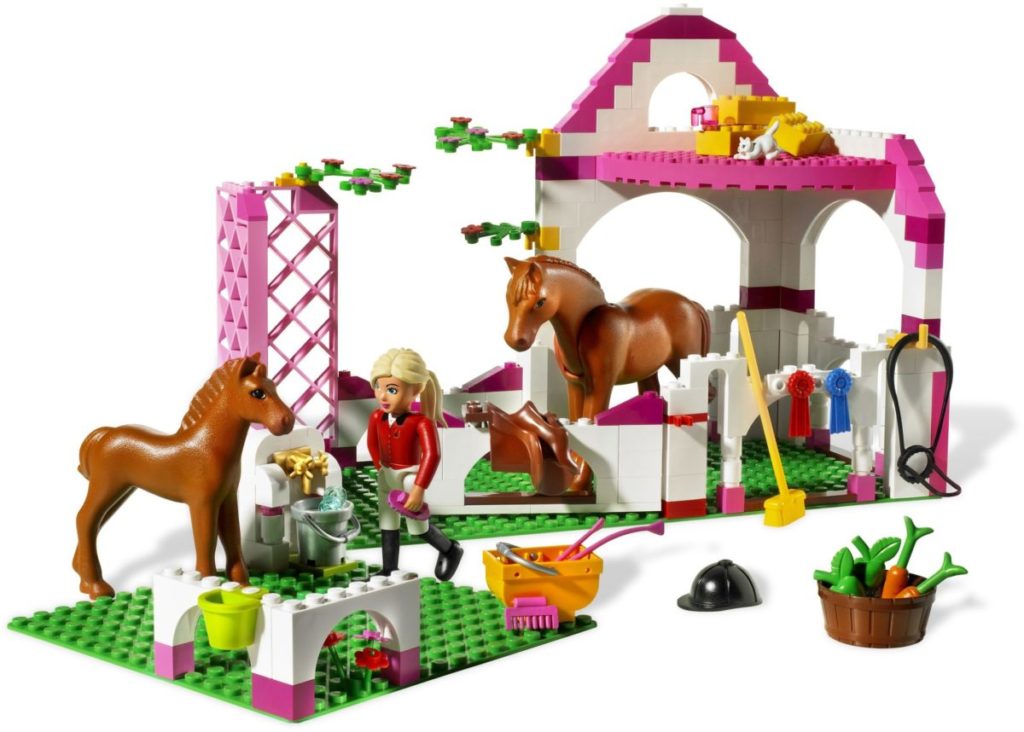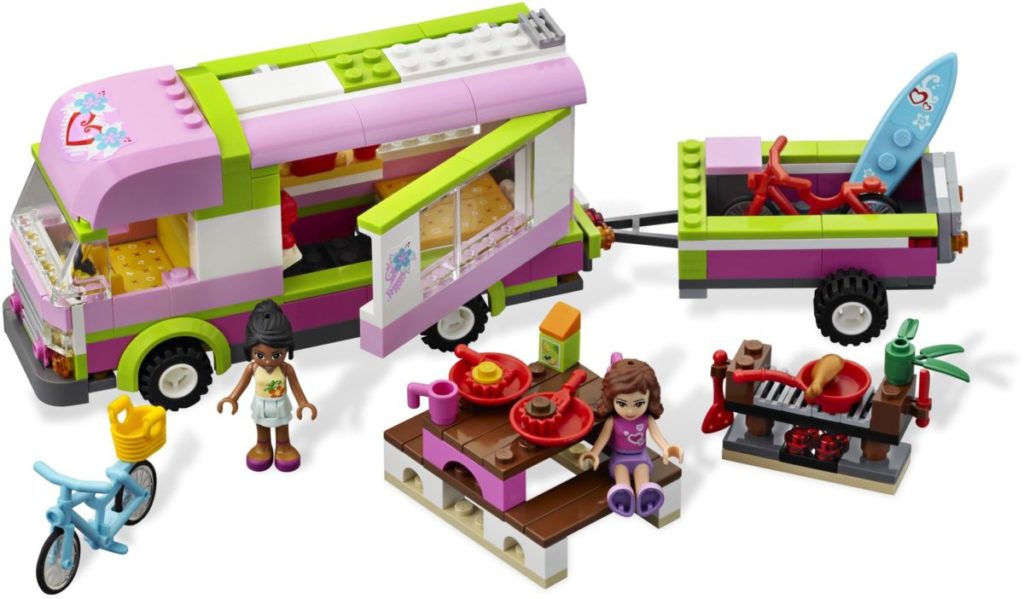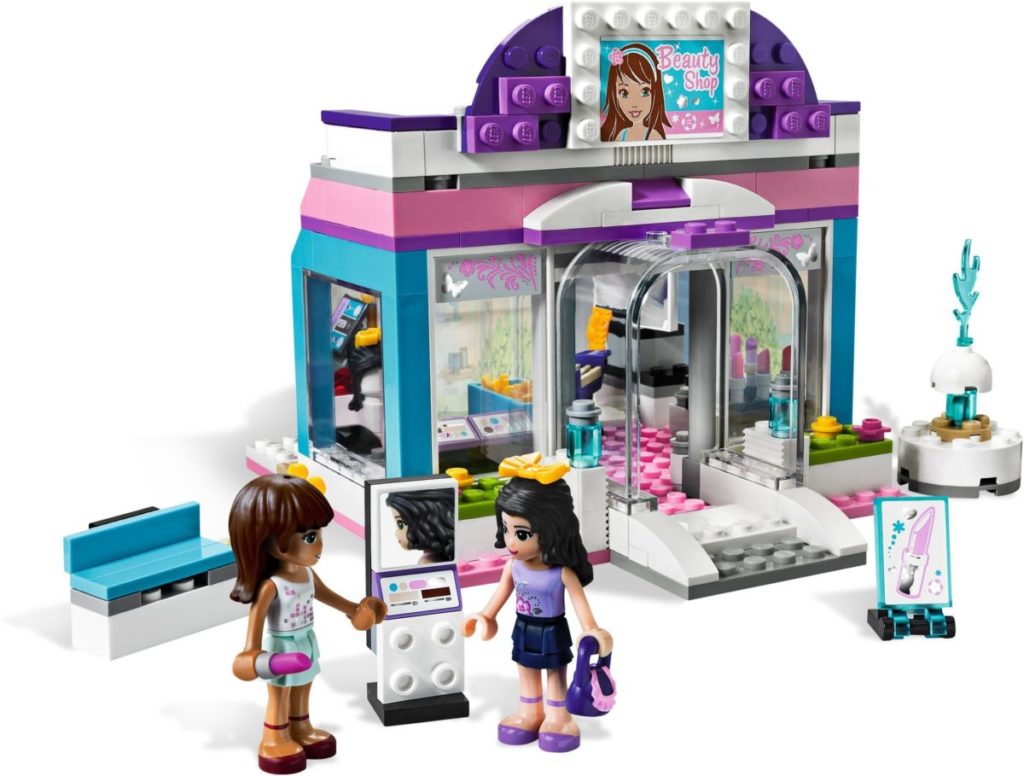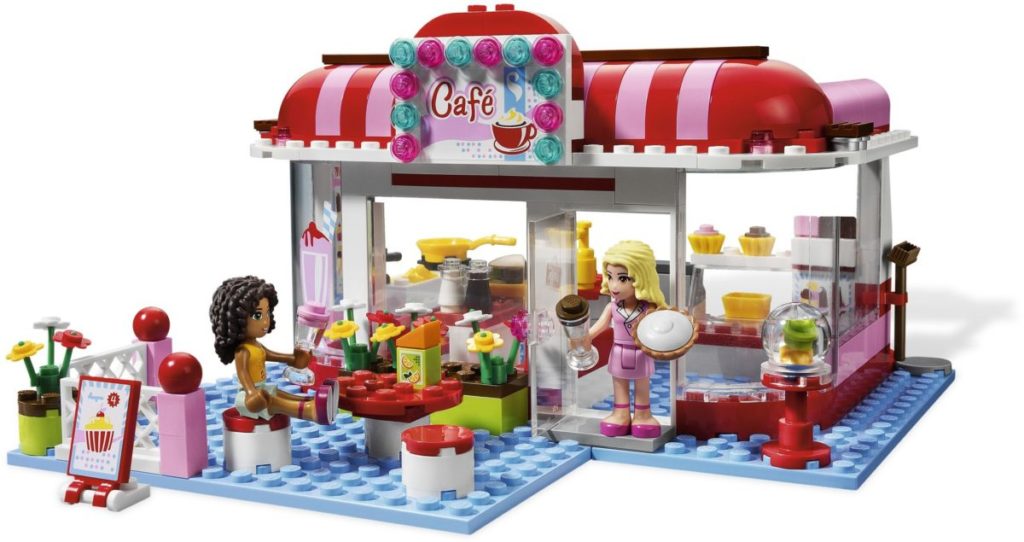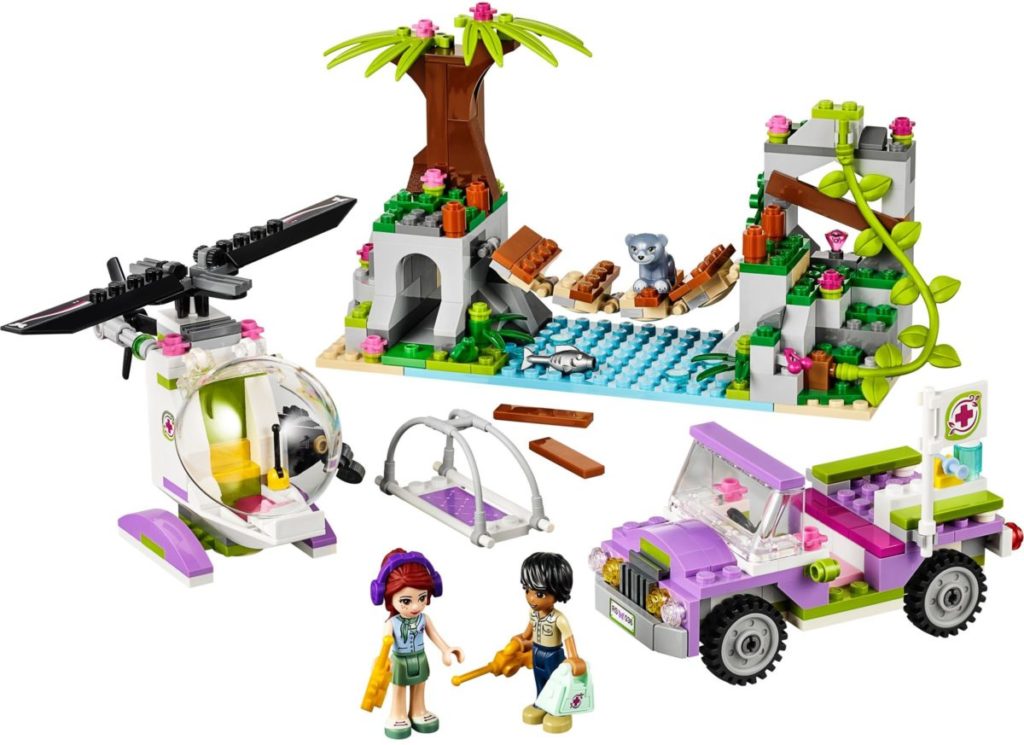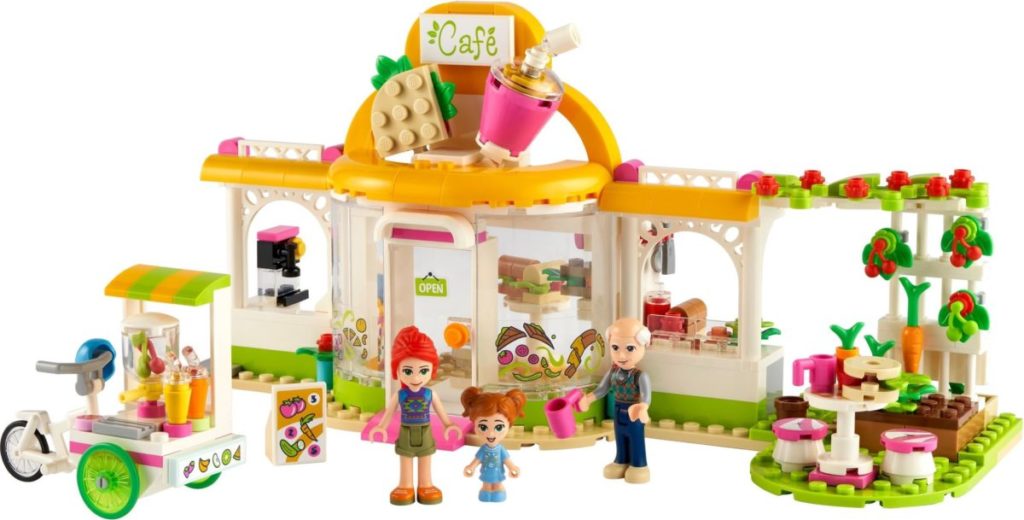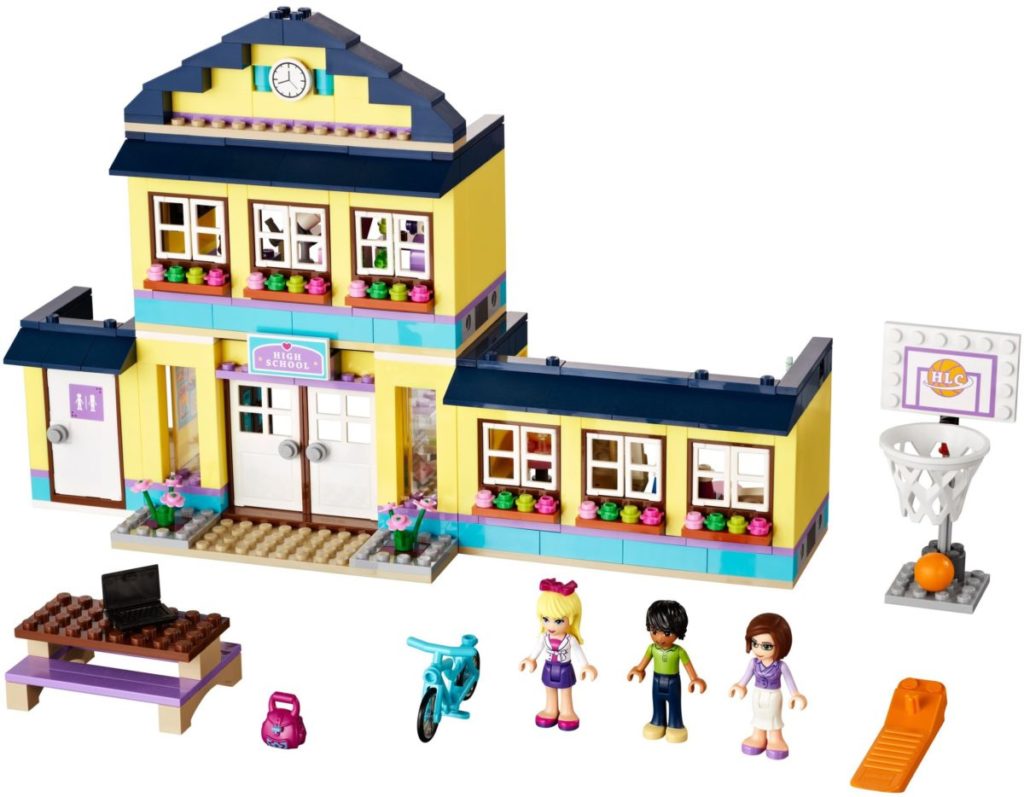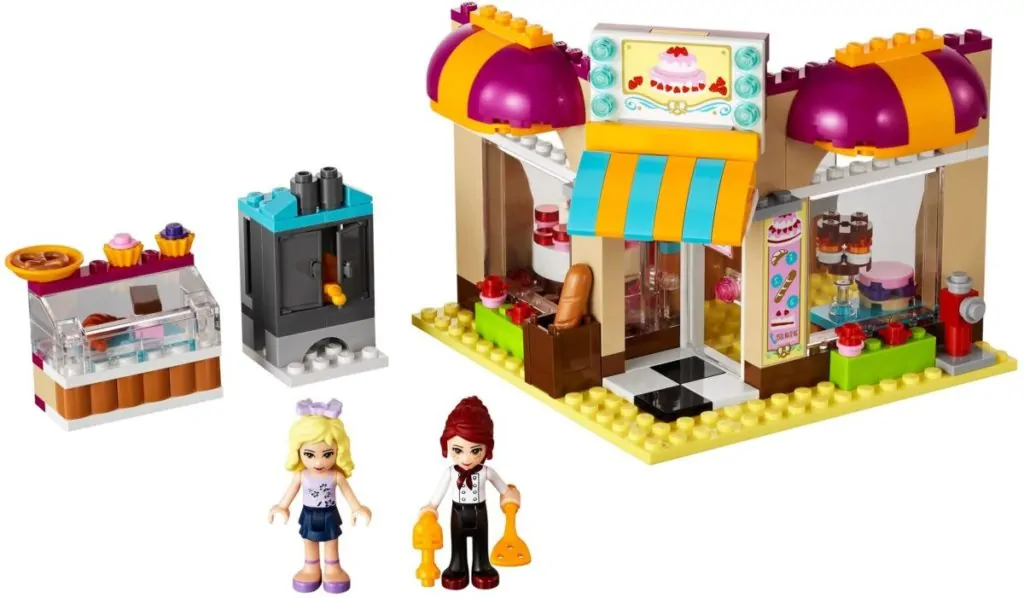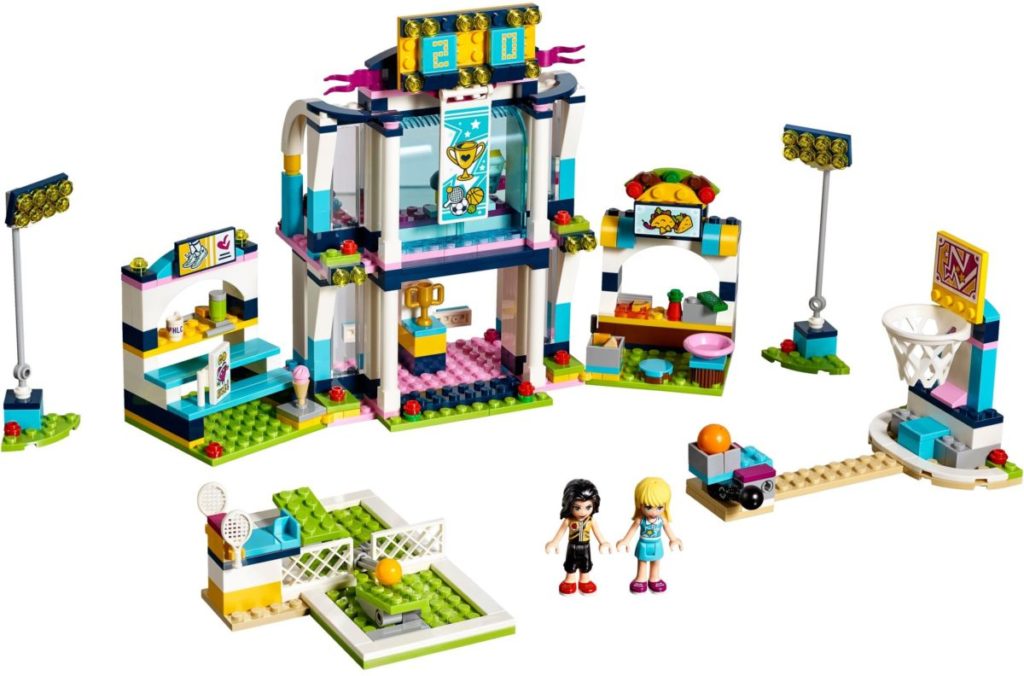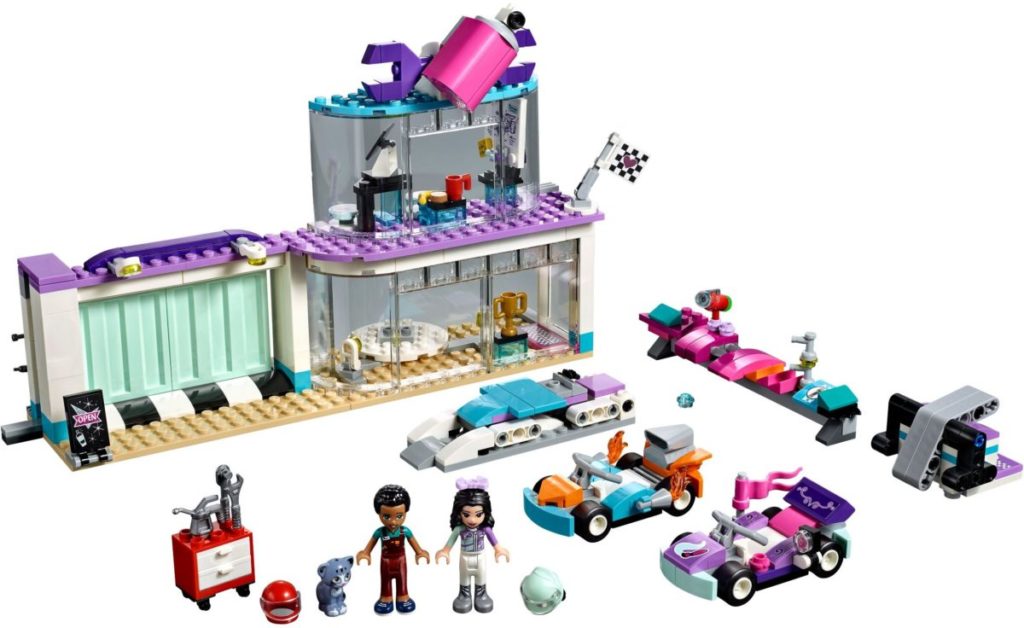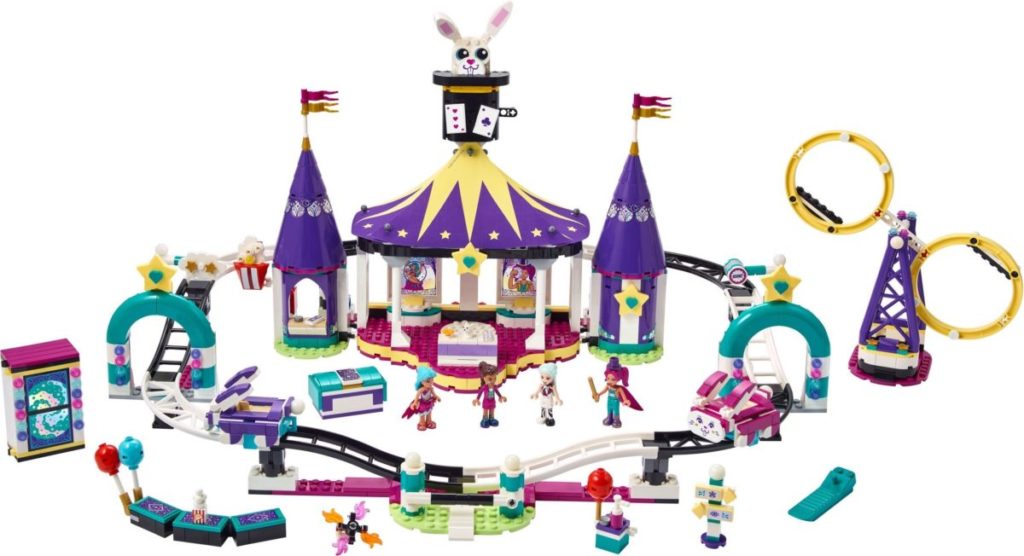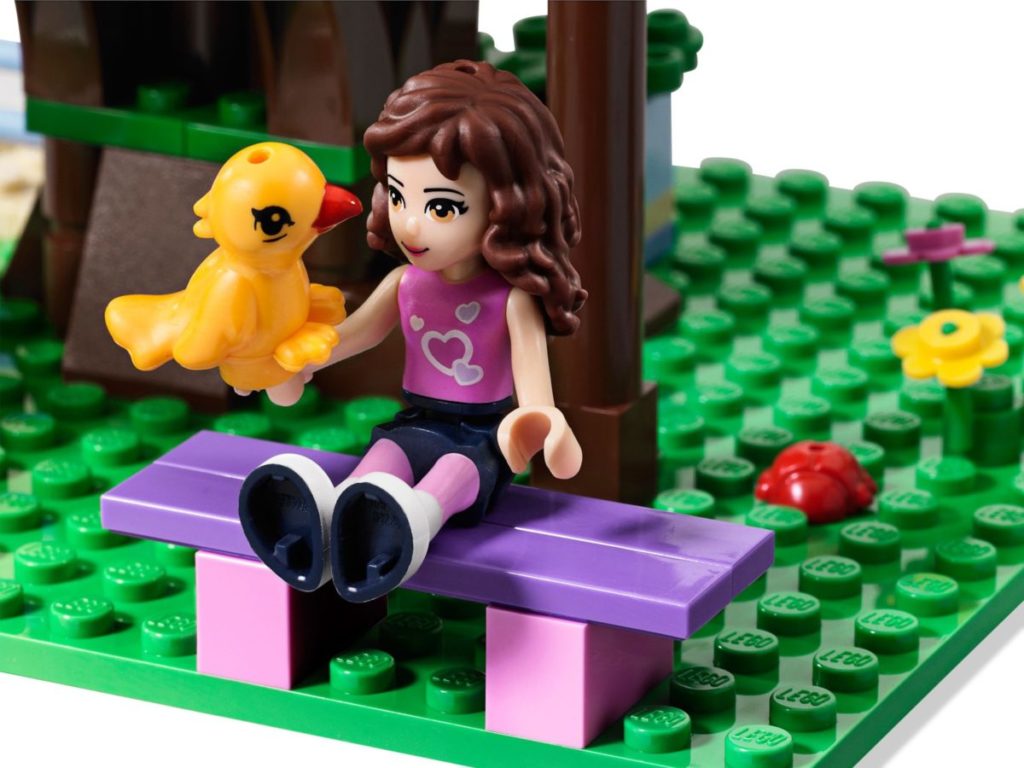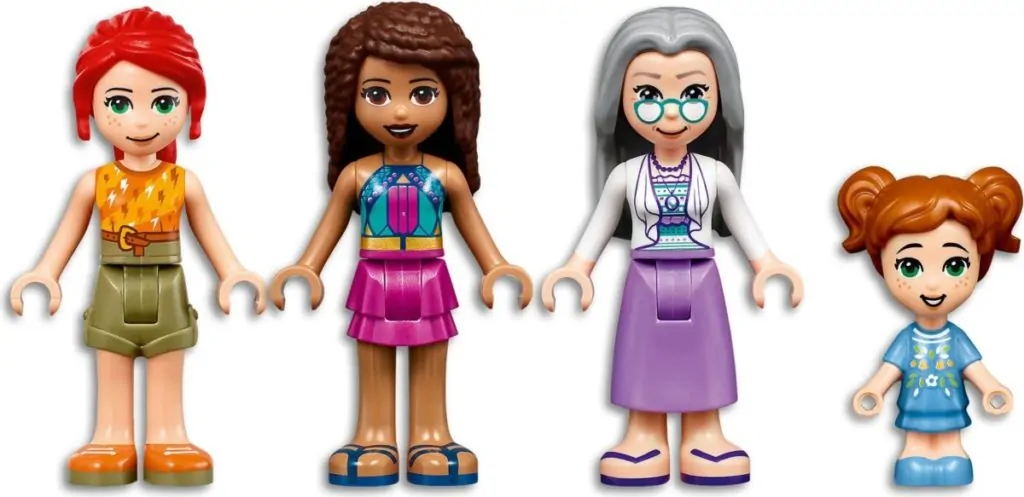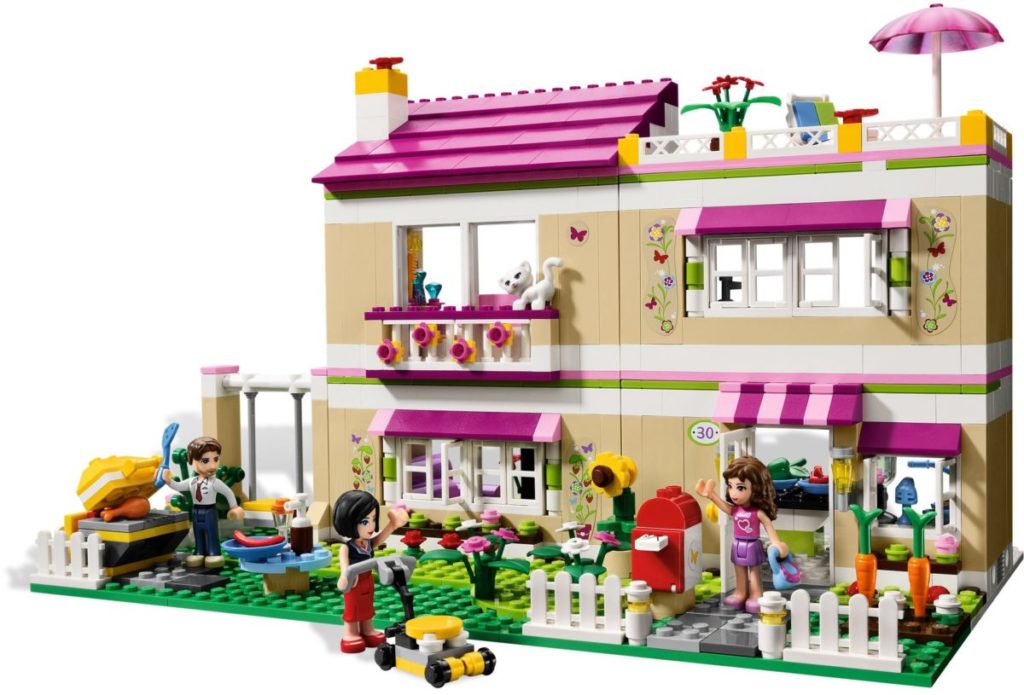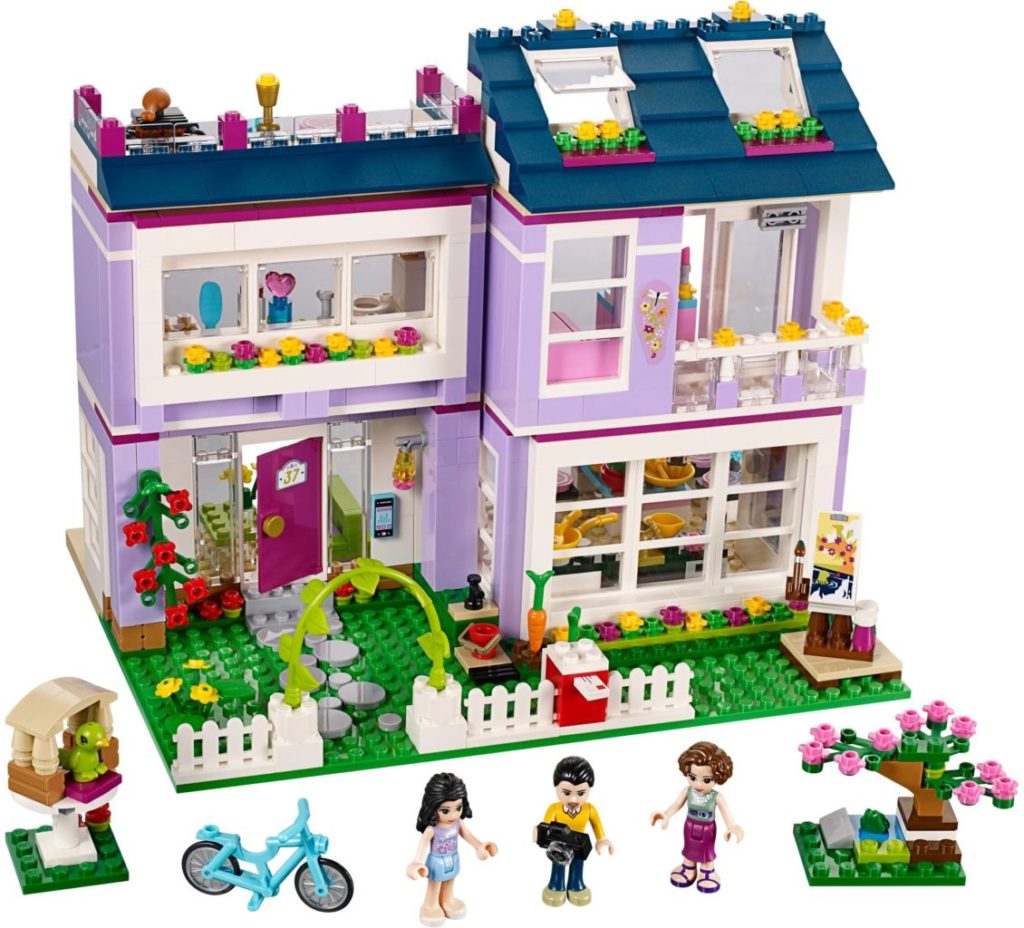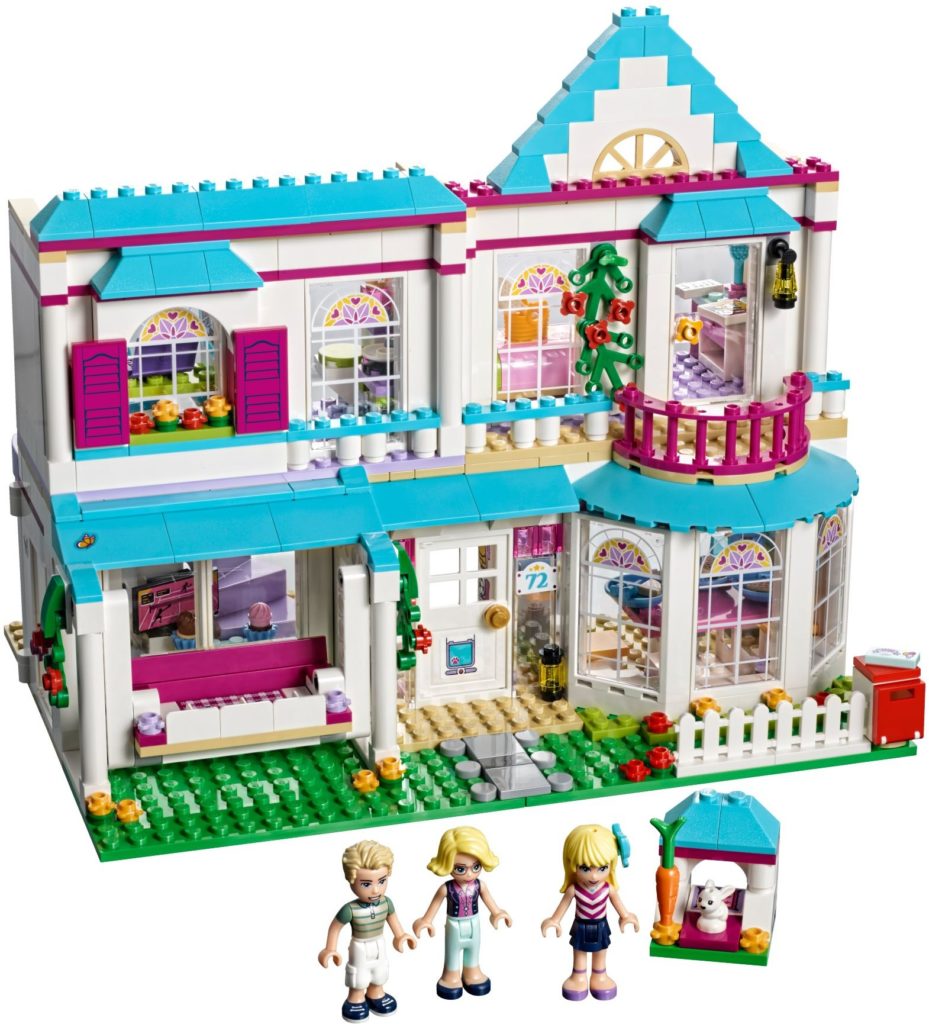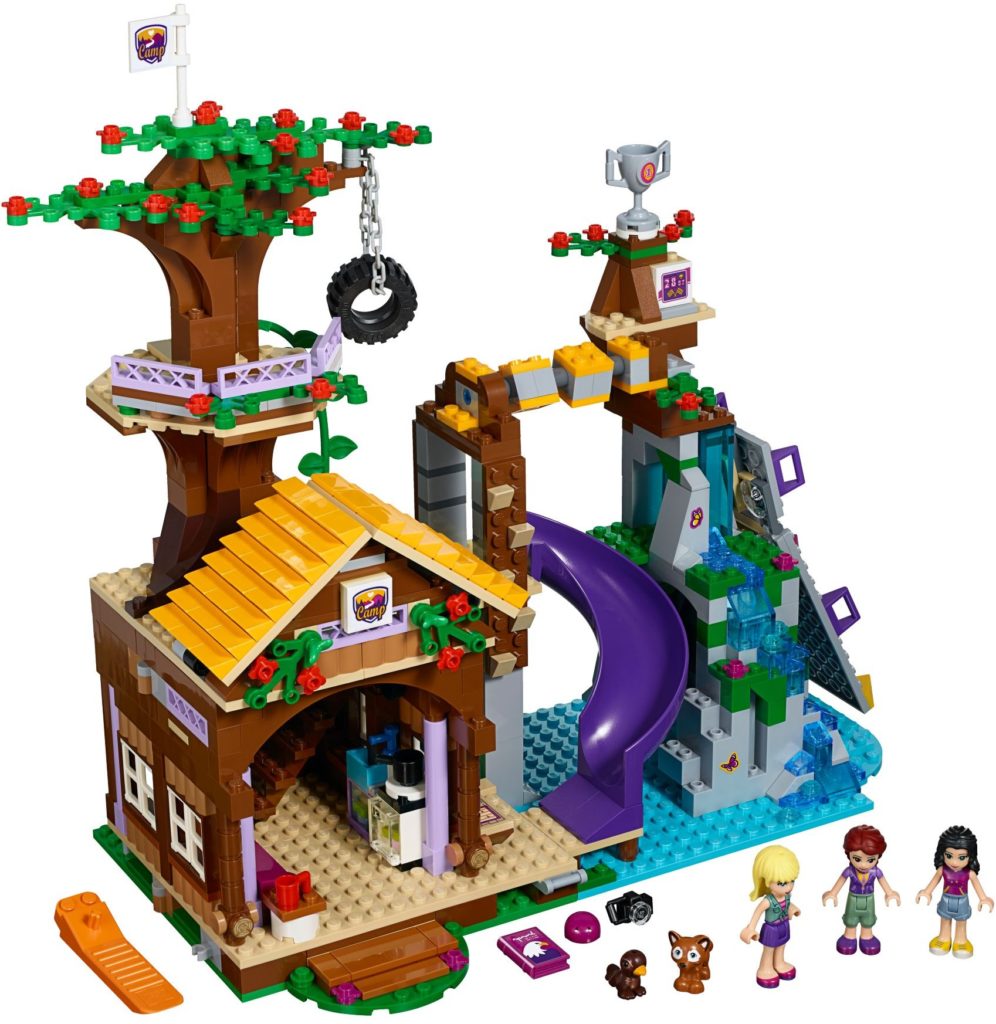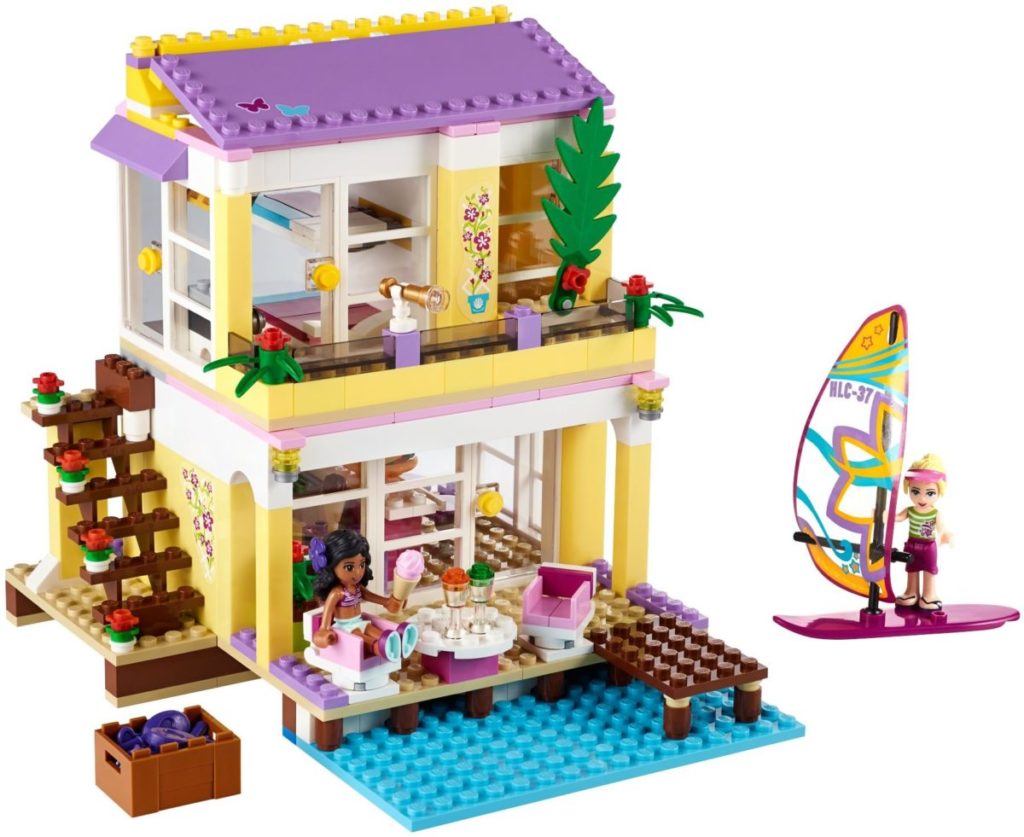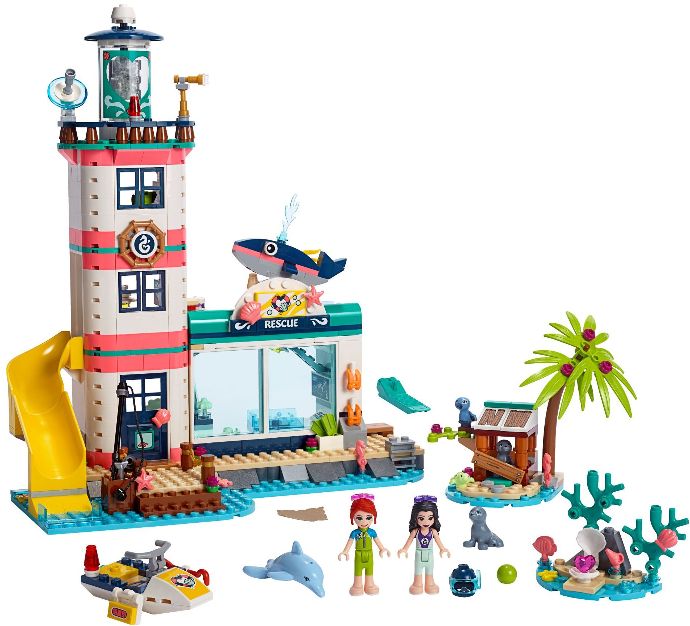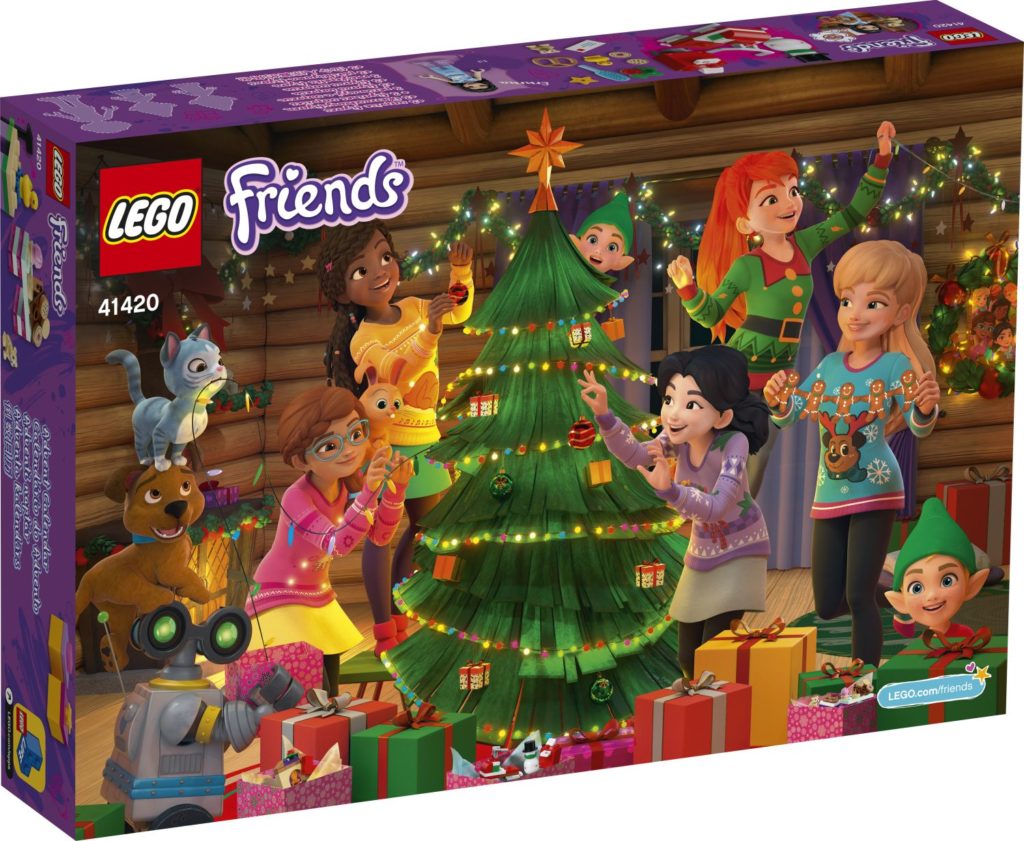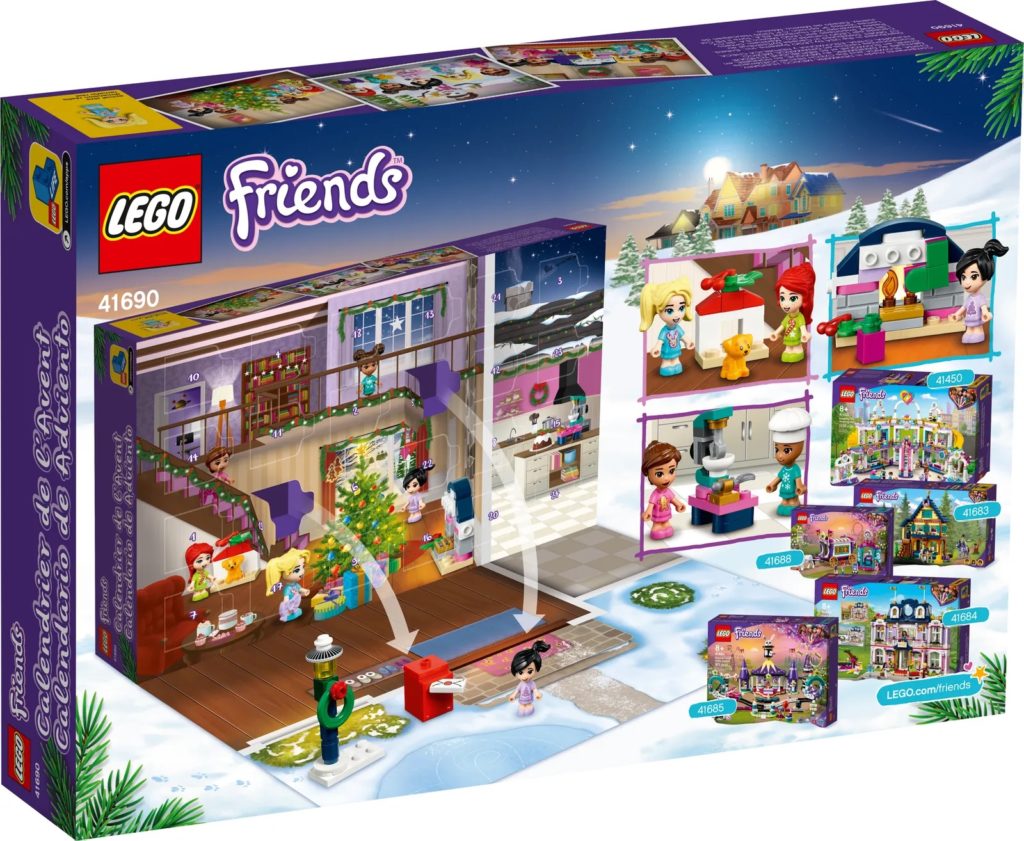Your basket is currently empty!
LEGO Friends
Who is LEGO for? That’s a question that’s been asked several times over the years. In 2012, the LEGO Group gave a clearer answer to it through the LEGO Friends theme.
LEGO Friends offered a new approach to character design and storytelling in its sets. Today the theme includes over 450 different models in its lineup, with a variety of different environments and scenarios for children to enjoy.
With its five female characters, pastel colours and pink branding, LEGO Friends appeals to stereotypically feminine audiences. However, as conversations around gendered toys continue to take place, it remains to be seen how Friends will change its product design – especially since the theme has proven wildly popular in its current form.
Visit LEGO.com to see the current Friends line-up first-hand.
LEGO Friends history
The LEGO Friends theme launched in 2012, following a long tradition of girl-centric LEGO products. The early ‘90s introduced the Paradisa theme – this used familiar pieces and minifigures but introduced a pastel colour scheme. It also featured activities commonly associated with girls, such as horseback riding.
Paradisa would be followed by other themes like Belville and Scala, which further upended the concept of a LEGO set. (Scala had been around since the late 70s, but more conventional playsets wouldn’t emerge until 1997). These themes introduced larger-scale figures with more realistic features and skin tones, as well as several domestic environments to play in.
Despite some slight differences in direction (Belville introduced several fantasy elements, for example) both Belville and Scala feature simple LEGO builds and several pre-fabricated objects. They also included numerous elements that could barely be called LEGO. As such, compatibility with other LEGO products was limited, and both these themes had retired by around 2010.
As the LEGO Group returned to its roots in the 21st century, a change of direction was called for. The first Friends sets debuted in 2012, with a focus on girls that was missing from most other LEGO sets at the time.
The broader set design of Friends was designed to appeal to girls, but not just in terms of colour scheme and activities. Research conducted by the LEGO Group at the time revealed that girls liked to project themselves onto the figures they played with. This may explain the five named characters that star in the theme, as well as the realistic skin tones and body shapes (albeit at a smaller scale than before).
In contrast to earlier girl-focussed themes, Friends used more sophisticated, brick-built models at a similar scale to most contemporary LEGO products. However, its mix of colours immediately differentiated it. Bright blues, greens, purples and yellows pop up across the Friends range, as do varying shades of pink.
Early Friends sets included subject matter we often associate with girls, such as vets, riding schools and beauty shops. However, they also allowed the unique interests of each character to shine through. Andrea received a miniature music stage, for instance, while Olivia received her own workshop (complete with a robot and purple toolkit).
While later sets would include things like catwalks and lemonade stands, it wouldn’t take long for LEGO Friends to get a bit more adventurous. 2014 introduced a Jungle Rescue collection, which allowed fans to come to the aid of various animals. 2015 added a lavish range of pop star sets, including a recording studio and tour bus. 2017 saw the friends embark on a ski trip, with a chalet, ski lift and ice rink to sample.
As the theme continued, it began to overlap more with prior LEGO sets. While houses and horse riding would continue to appear, 2018 introduced a racing subtheme. This allowed Friends fans to take to the race track for the first time. The next year introduced a range of oceangoing sets, letting fans dive beneath the (imaginary) waves.
2021 features considerable overlap with Friends itself; the theme has returned to the amusement park idea of 2016, and houses, horses and schools have popped up once more. However, a recent commitment by the LEGO Group to remove gender stereotypes from their sets throws up some questions around what the future of Friends will look like.
Since Friends was a response to how girls (frequently) play with toys, diversifying the Friends theme seems like a challenge. The LEGO Group have clarified the theme isn’t going anywhere, and more male characters are scheduled to appear in Friends sets. Whether that will inspire male Friends fans remains to be seen, but the theme has proven remarkably resilient. It certainly can surprise us in the future.
LEGO Friends sets
Sets in the Friends range have proven more evolutionary than revolutionary. They’re analogous to the CITY theme in terms of size and design; bright colours and child-friendly construction techniques abound throughout Friends’ history. Larger builds also sit comfortably alongside smaller ones, allowing many different children to enjoy the theme.
Given the relatively young target audience, there are plenty of familiar and domestic places depicted in Friends models. 41005 Heartlake High, for instance, lets children explore a school environment during play sessions. The use of an art studio and a LEGO owl fosters some fun creative scenarios, which the real high school hopefully facilitates too. Other early releases like 41006 Downtown Bakery offered obvious play opportunities, including plenty of baked goods and utensils to play with.
While Friends has – like CITY – ventured beyond towns and neighbourhoods, we can still discern a different direction of play. CITY’s Jungle subtheme – released in 2017 – had a strong focus on exploration and hostile wild animals. Friends’ visit to the jungle, in contrast, emphasises a more nurturing side to play. This idea was revisited in later Friends sets, and the Animal Rescue sets in the CITY line could be a way to reconcile these two approaches.
Moreover, LEGO Friends has tried to combine familiar feminine pursuits with ones that are more masculine – or at least gender-neutral. 41338 Stephanie’s Sports Arena allowed Friends fans to play tennis and basketball, while 41351 let them get their (metaphorical) hands dirty in a car garage.
Smaller Friends models allow for fun new approaches to play. 2019’s Summer Heart Boxes offered small, brick-built playsets that doubled as a storage solution. Play Cubes – released the following year – provided a similar experience, as well as a blind-bagged critter for added intrigue.
2021 releases like 41682 Heartlake City School, 41685 Magical Funfair Roller Coaster and 41693 Surfer Beachfront follow in the footsteps of older Friends sets. But this isn’t a bad thing; LEGO is always getting new generations of fans. The long life of the theme suggests its strategy of iteration and gentle revision is the way to go for its target audience.
LEGO Friends minifigures
The LEGO minifigure has been around since 1978 and has seen off many challengers over the years. However, in 2012 it met its match. The mini-doll has proven very popular and even gravitated to several non-Friends themes in recent years. Today, minifigures and mini-dolls happily coexist across the LEGO Group’s portfolio.
Mini dolls are a little taller than their minifigure counterparts. Their bodies and limbs are slimmer, and they can accommodate slightly different shapes of hair elements to their blockier cousins. They also feature more realistic faces and skin tones, although articulation is limited. Their hands cannot rotate and their legs must move as a single unit, with mini-dolls pivoting from the waist.
Despite this, mini-dolls can interact with the wider LEGO universe well enough. Their hands can grip all the tools minifigures can (although they benefit from unique handlebar pieces). They can also be held securely in vehicles thanks to a special plate piece.
Like the minifigure, the mini-doll has undergone some evolution over the years. Early face prints were relatively simple, with little variation in facial expression. However, they immediately benefitted from more realistic hair pieces, which offered a more coherent appearance. These even come with tiny holes to accommodate hair bows and other accessories.
Torso prints were also relatively simple in this early period. However, unlike the minifigure, the mini-doll enjoyed a variety of leg assemblies. Trousers, shorts and varying skirt lengths could all be replicated more elegantly than the minifigure could manage.
Within these criteria, Friends mini-dolls have enjoyed many different outfits over the years. The most recent mini-dolls offer improved printing and finer facial detail (such as glasses and freckles). Having established a sturdy template, we predict a long life for the mini-doll in LEGO sets.
LEGO Friends house
Children have always enjoyed playing with houses, and they’ve been able to enjoy numerous LEGO houses over the years. The Friends theme has produced plenty of houses since its early days, offering new generations a familiar environment to play in.
3315 Olivia’s House is the earliest example. This set gave Olivia, her parents and her pet cat a place to call home. It comes with all the essential features of a family home; a living room, a bathroom and a bedroom for Olivia to spend time in. The exterior also features a barbeque, a lush lawn and a lawnmower to keep things tidy.
As the years passed, Emma, Stephanie, Mia and Andrea would receive homes of their own. While there was a lot of overlap in their basic design, each house has some unique features. 41095 Emma’s House features a rooftop dining area and brick-built easel, while 41314 Stephanie’s House includes a brick-built vacuum cleaner – a rare inclusion in LEGO sets. 41369 Mia’s House included a climbing wall on the exterior and 41449 Andrea’s Family House features a garage for Andrea to practise drumming in.
The house concept has been approached from a few other directions. Treehouses have been a popular subject matter for Friends sets; 3065 Olivia’s Tree House appeared in the theme’s earliest days, with a birdhouse, foliage and tasteful purple planks. 41122 Adventure Camp Tree House was a little more ambitious, offering a climbing wall, tyre swing and slide for the girls to enjoy. 41679 Forest House was released in 2021; it’s relatively simpler in design but features some lovely trees and a kayak to go exploring in.
Houses by the sea have also popped up now and then. 41037 Stephanie’s Beach House offered a spacious kitchen and a windsurfer assembly. 41380 Lighthouse Rescue Centre, meanwhile, included plenty of medical equipment and animals to rescue. 41693 Surfer Beachfront has more of a retail focus, but it’s still a lovely model for today’s Friends fans.
Given the universal appeal of the toy house, we feel it’s a safe bet that more houses will appear in Friends form.
LEGO Friends advent calendar
For certain themes, the advent calendar has become a hotly anticipated product release. They offer various rare and exclusive minifigures, as well as several delightful mini builds to look forward to.
The Friends theme has jumped on the Advent calendar train with great enthusiasm. Friends-themed Advent calendars have appeared from the wider theme’s earliest days, even as their approach has varied a little over the years.
3316 Friends Advent Calendar was the first and offered similar products to other Advent Calendars at the time. In addition to two mini-dolls, there are several festive accessories to build including sledges, presents and a tiny Christmas tree. Later calendars continued in much the same way, although the quality of the builds naturally improved as well.
In 2018, the Friends theme would shake things up a little. 41353 Friends Advent Calendar – released in 2018 – offered several slightly larger builds. These were designed to be hung from a Christmas tree as decorations and featured holes where string could be threaded through. These also referenced the interests of the core Friends characters, with guitar, camera and microscope builds all making an appearance.
While next year’s calendar had a similar approach, this was abandoned by 2020. 41420 Friends Advent Calendar returns to the mini-doll-scale builds, and 2021’s has done so as well. However, 41690 Friends Advent Calendar features new ‘micro-doll’ versions of its characters, offering a fresh twist on a familiar concept.
LEGO Friends bus
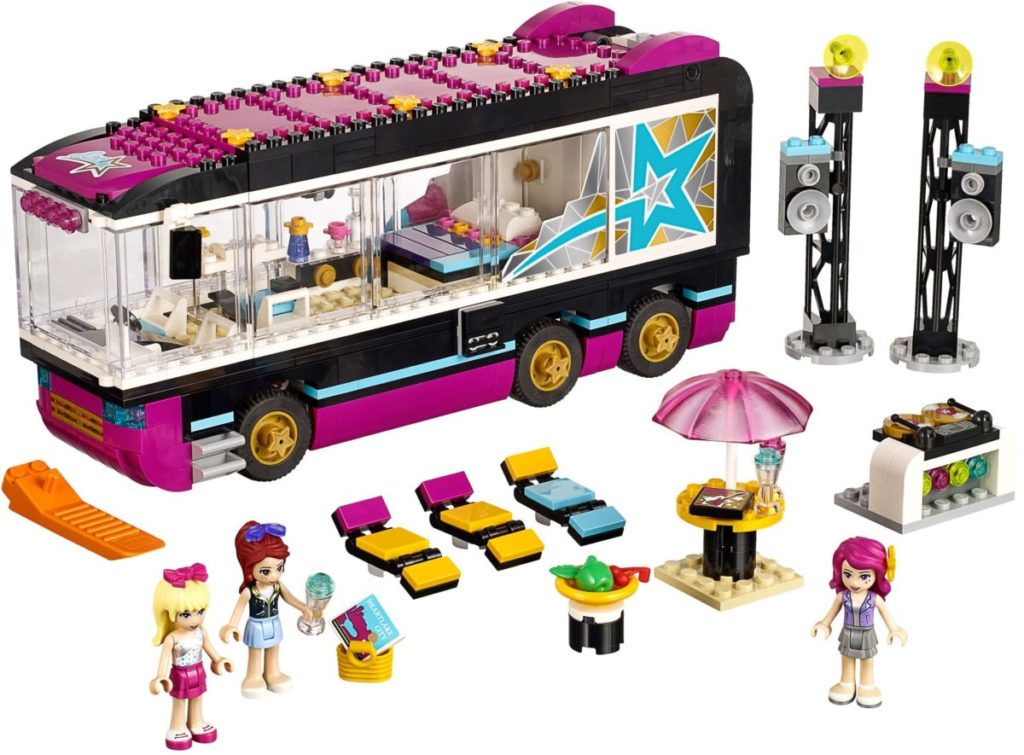
Heartlake City doesn’t seem to be big on public transport. Only two buses have been released as standalone sets in the Friends line (although 31134 Heartlake Performance School did come with a school bus). Still, both offered excellent play value for young LEGO fans.
41106 Pop Star Tour Bus allowed Stephanie, Mia and Livi to embark on a magical musical journey. It included plenty of interior space as well as sun loungers, DJ decks and even an onboard bathtub. A variety of healthy snacks allowed the bus’ passengers to keep their energy levels up between shows, while a rehearsal area ensured they were ready for the real thing.
Stephanie and Mia would ride the bus again in 2020, with Olivia in tow this time around. 41395 Friendship Bus allowed LEGO fans to tour Heartlake City in style. The onboard pool allowed them to get their feet wet, while a kitchen allowed for plenty of tasty meals. When the day was over, fans could stargaze from the top before falling asleep in one of the five beds.
LEGO Friends hospital
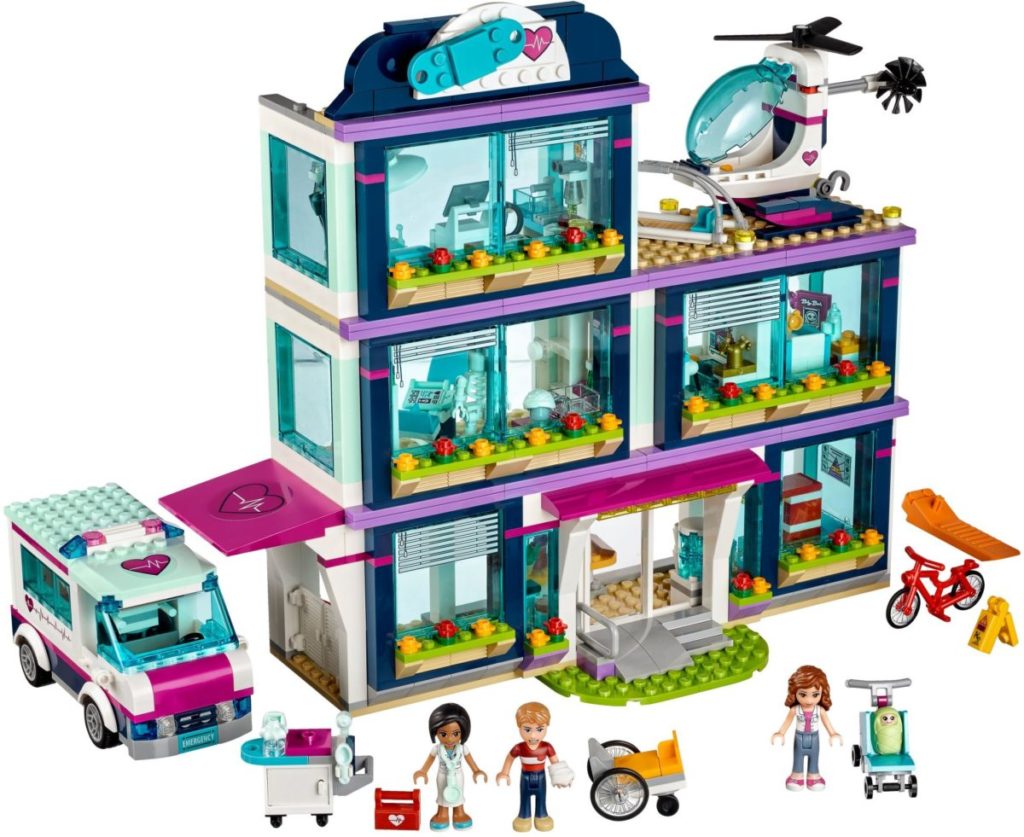
Hospital sets are surprisingly rare in LEGO form; the release of a new one is a very special event. The Friends theme has provided us with two hospital sets during its lifespan.
The first one, 41318 Heartlake Hospital, came out in 2017. It remains one of the most fully-featured hospitals ever seen in LEGO form. Upon arriving at the check-in desk, visitors can grab a snack, get an x-ray or spend time in the examination room. There’s also a dedicated nursery and useful vehicles like an ambulance and helicopter. Fine details like a baby book, fish tank and wet floor sign make this a very special set, within and without Friends itself.
41394 Heartlake City Hospital is a smaller, simpler model, though it arguably has a stronger narrative element than its predecessor. After slipping on a banana, Ethan is rushed to the hospital for medical attention. An ambulance ensures speedy arrival at the hospital itself, while an examination room helps check for broken bones. Downstairs a microscope allows for finer investigation, while various bandage elements ensure Ethan is properly patched up. Despite a relatively narrow focus, Friends has allowed for diverse play over the last decade.
LEGO Friends Black Friday
Check back here around Black Friday for our predictions on discounts in the LEGO Friends range.
